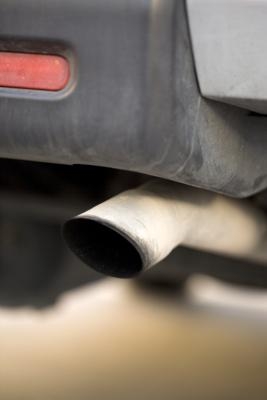
The muffler, also known as exhaust box, helps limit the noise of engine gases in your vehicle. The muffler, located at the rear underside of a vehicle, plays a key role in the exhaust system. Constant exposure to vapors cause the muffler to rust and develop holes. Check your exhaust system, including the muffler, periodically, to avoid harmful exposure to exhaust gas.
Noises emitted by the muffler can point to a bad part. A low booming sound or a hiss signal a bad muffler. Investigate any rattling sounds, as well. Any loud noises should be checked by yourself or a professional. If your muffler usually makes a bit of noise, pay attention to any increases in decibel, as this is also a symptom of a muffler in need of repair.
Pay attention to your vehicle. Understanding your vehicle performance helps distinguish between normal activity and a possible problem. A rough idle indicates a bad muffler. Also, excessive air pollution and clouds of smoke emitting from the tail pipe might signal you need a new muffler. Decreased fuel economy and inhibited engine power also require immediate attention.
A quick peek at the muffler can present more signs of a part in need of repair. A muffler covered in soot indicates need for a replacement, as does rust. Attend to any holes in the muffler, urgently, as toxic gases leak through holes and contaminate the cabin area. Also, thoroughly inspect any areas of suspected corrosion or damage.